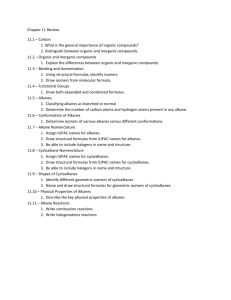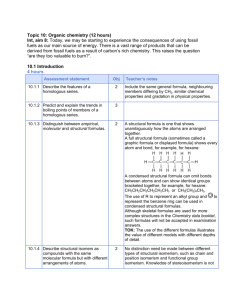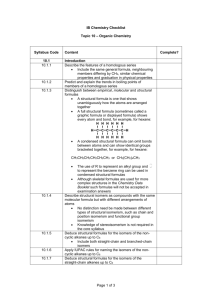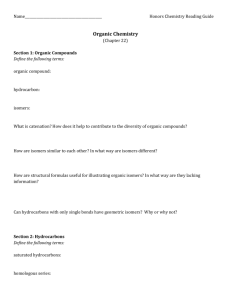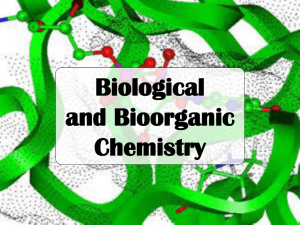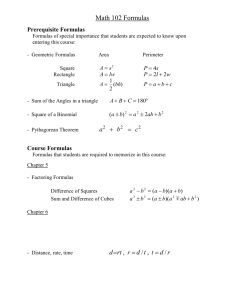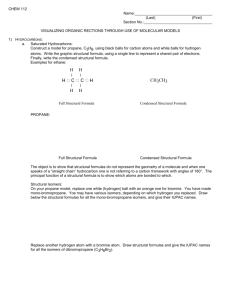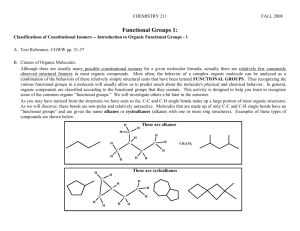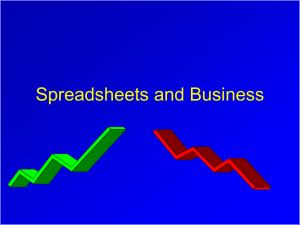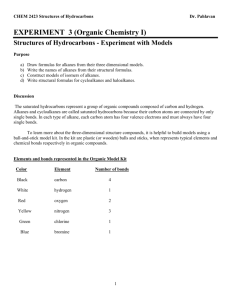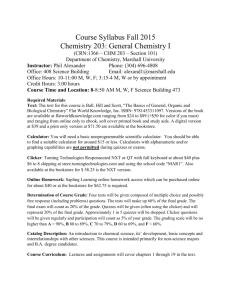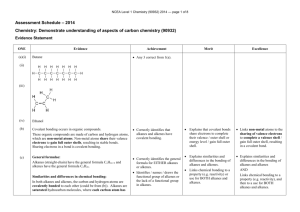Test Objectives for Unit 13: Organic Chemistry
advertisement
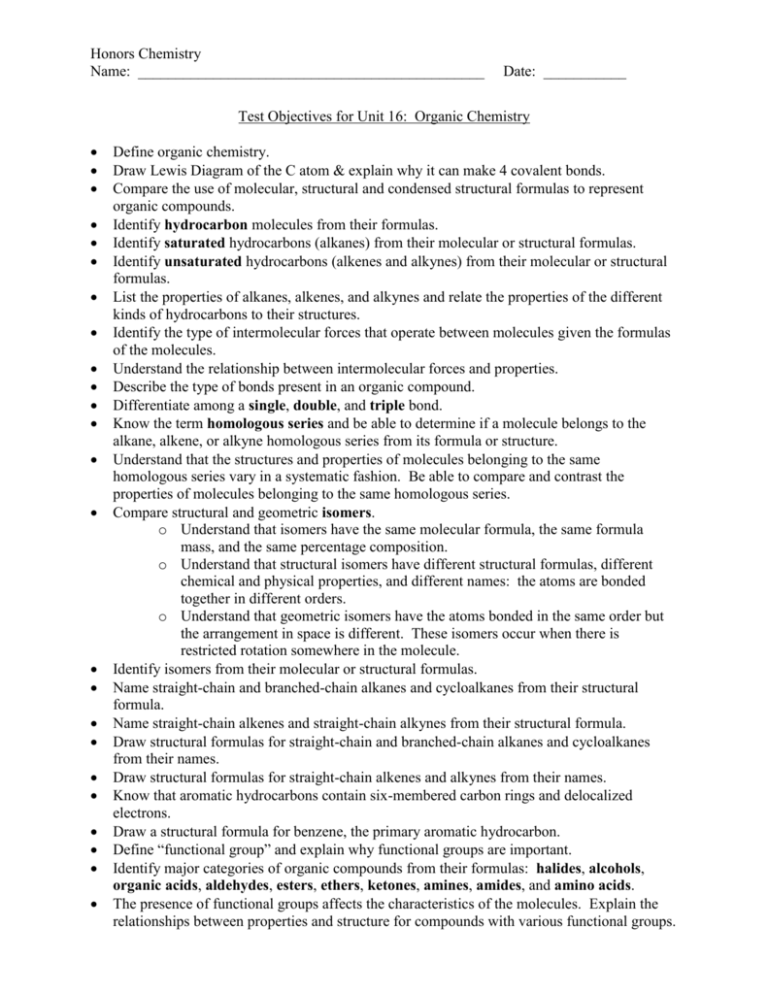
Honors Chemistry Name: ______________________________________________ Date: ___________ Test Objectives for Unit 16: Organic Chemistry Define organic chemistry. Draw Lewis Diagram of the C atom & explain why it can make 4 covalent bonds. Compare the use of molecular, structural and condensed structural formulas to represent organic compounds. Identify hydrocarbon molecules from their formulas. Identify saturated hydrocarbons (alkanes) from their molecular or structural formulas. Identify unsaturated hydrocarbons (alkenes and alkynes) from their molecular or structural formulas. List the properties of alkanes, alkenes, and alkynes and relate the properties of the different kinds of hydrocarbons to their structures. Identify the type of intermolecular forces that operate between molecules given the formulas of the molecules. Understand the relationship between intermolecular forces and properties. Describe the type of bonds present in an organic compound. Differentiate among a single, double, and triple bond. Know the term homologous series and be able to determine if a molecule belongs to the alkane, alkene, or alkyne homologous series from its formula or structure. Understand that the structures and properties of molecules belonging to the same homologous series vary in a systematic fashion. Be able to compare and contrast the properties of molecules belonging to the same homologous series. Compare structural and geometric isomers. o Understand that isomers have the same molecular formula, the same formula mass, and the same percentage composition. o Understand that structural isomers have different structural formulas, different chemical and physical properties, and different names: the atoms are bonded together in different orders. o Understand that geometric isomers have the atoms bonded in the same order but the arrangement in space is different. These isomers occur when there is restricted rotation somewhere in the molecule. Identify isomers from their molecular or structural formulas. Name straight-chain and branched-chain alkanes and cycloalkanes from their structural formula. Name straight-chain alkenes and straight-chain alkynes from their structural formula. Draw structural formulas for straight-chain and branched-chain alkanes and cycloalkanes from their names. Draw structural formulas for straight-chain alkenes and alkynes from their names. Know that aromatic hydrocarbons contain six-membered carbon rings and delocalized electrons. Draw a structural formula for benzene, the primary aromatic hydrocarbon. Define “functional group” and explain why functional groups are important. Identify major categories of organic compounds from their formulas: halides, alcohols, organic acids, aldehydes, esters, ethers, ketones, amines, amides, and amino acids. The presence of functional groups affects the characteristics of the molecules. Explain the relationships between properties and structure for compounds with various functional groups. In particular, many organic molecules containing functional groups are polar and therefore soluble in water. For each functional group, understand the type of intermolecular forces & how these forces affect the melting point, boiling pt, & solubility compared to the alkanes. Name representatives of organic compounds from each category using the structural formula as a guide. Draw representatives of organic compounds from each category using the name as a guide. Identify an organic reaction as: addition, substitution, addition polymerization, condensation polymerization, esterification, fermentation, saponification, or combustion. o Describe and distinguish between addition and substitution reactions. o Describe and distinguish between condensation and elimination reactions. Identify the two main types of polymers and the basic reaction mechanisms by which they are made. Know the reactants and products in each reaction above. Given part of a reaction, be able to complete it.
